Measuring your training intensity is extremely important when it comes to strength and muscle gains.
If you find yourself half-assing workouts, you can expect you won’t see much progress. Using intensity correctly results in progressive overload; which is how you gain strength and muscle mass. Overdoing the intensity, on the other hand, can lead to too much stress and no results.
It’s important to learn how to gauge intensity in your training and listen to your body’s signs when you are going a little too hard.
How to Measure Training Intensity
There are a few different ways to measure intensity during a workout and we are going to break down each one we like to use with our athletes.
RPE
RPE stands for rate of perceived exertion.
On a scale from 1 to 10 (10 being your absolute max and 1 being almost no effort at all), how hard was the load lifting for the reps prescribed? The traditional RPE scale was originally 6-20, but that is a difficult scale to utilize so many people use 1-10. You can do any scale you want, but just make sure it is consistent.
We find the easiest scale to digest is the 1 to 10 scale. If we have a set RPE for clients, we generally write it like this: work up to a set of 8 reps at a 9 RPE. So basically, they should choose a weight where at the end of the set they have 1 rep left in the tank. (10 – 9 = 1).
RPE 10 = Max Effort, No Reps Left
RPE 9 = 1 Rep Left
RPE 8 = 2 Reps Left
RPE 7 = 3 Reps Left
RPE 6 = 4 Reps Left
Percentage Based
This style of intensity training is based off of your estimated or true one rep max. So, a client usually sees a percentage written for the given lift.
For example: Perform 4 sets of squats at 7 reps @80%. This means 80% of their one rep max weight. This works well for the overthinkers who thrive on their coach telling them exactly how much to lift and when!
The downside to percentage-based training is that it doesn’t account for daily fluctuations in strength due to outside factors. Because we are human, we may not be able to always hit the percentages prescribed. That’s where autoregulation (using a method that allows for some leeway and program changes based on how you feel you can perform that day) comes into play.
Talk Test
The talk test will mostly be used during conditioning training. Let’s say you are performing maximal effort cardio training in the form of cycling. If you can carry on a conversation easily, this is a low intensity effort. If you can talk somewhat, but struggle a little with full sentences, this is a more moderate intensity effort. If you cannot talk at all, you are most likely exerting maximal effort.
When to Increase Workout Intensity
If your progress has stalled, it might be time to increase your training intensity.
A lot of factors come into play here, though. Before increasing your intensity, make sure your sleep and nutrition are dialed in so your recovery will be optimized and you can actually reap the benefits from the increased intensity.
What does this look like?
It can look different from person to person. If you find you are stuck in the 8-12 rep range for all your movements and never move out of it, it might be time to do a phase of pure strength training of 1-4 reps at maximal loads (safely of course).
Can Higher Training Intensities Be Over-utilized?
Absolutely. Over-applying intensity can be just as bad as not creating enough intensity in your workouts.
Working out too intensely for too long will overcome your body’s ability to recover and adapt. Adaptation is when the body recovers enough to grow stronger from the stimulus you provided. If you consistently abuse intensity, you will likely become overtrained and potentially LOSE muscle and strength (and some even get sick from overtraining).
This is where smart programming comes into play. Manage your workout intensity wisely. If you feel sore for days after a workout, you probably went a little too hard. If you feel like you are going to pass out or puke from a workout, you went way too hard. You’re not a hero for working out so hard that you get to this point.
Some soreness from your workout is great. Feeling energized from your workout is great. But not being able to move the next day consistently will limit your recovery and sabotage your training progress. Incorporating recovery techniques such as therapeutic massage or ice baths are helpful, but nothing beats understanding proper recovery and managing volume and fatigue within our workout.
How We Program Training Intensity For Our Clients
A general rule of thumb we like to follow is keeping the intensity of the resistance applied to an 8 RPE. So an 8 on this scale would be a weight you can lift for the amount of reps prescribed with 2 reps left in the tank at the end of the set.
However, sometimes our strength athletes need intensity to be pushed. Our powerlifting clients will need to push the intensity because the goal of the sport is to lift the most amount of weight possible.
But that’s the difference – powerlifting and olympic lifting are sports. Sports require some degree of overtraining and overreaching. The majority of people should approach their training like they want to do resistance training for the rest of their lives, and save that intensity for occasional workouts where you want to test yourself.
Want to learn more? Check out our podcast: Stronger Than Your Boyfriend.
We talk training, nutrition, recovery, and more. Available on Apple Podcasts and Spotify.



